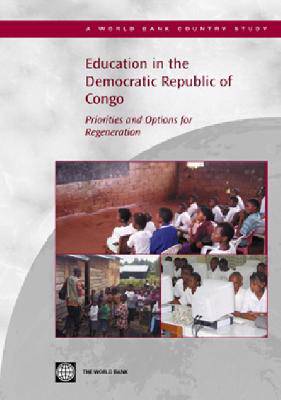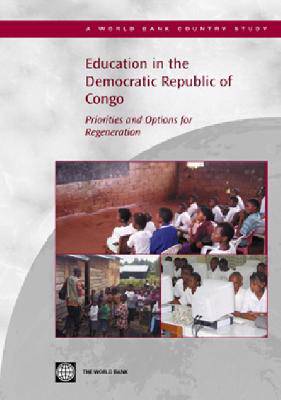
Door een staking bij bpost kan je online bestelling op dit moment iets langer onderweg zijn dan voorzien. Dringend iets nodig? Onze winkels ontvangen jou met open armen!
- Afhalen na 1 uur in een winkel met voorraad
- Gratis thuislevering in België vanaf € 30
- Ruim aanbod met 7 miljoen producten
Door een staking bij bpost kan je online bestelling op dit moment iets langer onderweg zijn dan voorzien. Dringend iets nodig? Onze winkels ontvangen jou met open armen!
- Afhalen na 1 uur in een winkel met voorraad
- Gratis thuislevering in België vanaf € 30
- Ruim aanbod met 7 miljoen producten
Zoeken
€ 23,45
+ 46 punten
Omschrijving
The education system in the Democratic Republic of Congo (DRC) has proved remarkably resilient in the face of economic crisis and armed conflict. Enrolment has grown at all levels but has been most rapid in higher education. During this period of conflict, the education sector was financed almost entirely by household contributions. The DRC is now faced with critical policy choices as it moves to a more efficient and equitable balance between public and private financing and in expanding and upgrading the quality of the system. 'Education in the Democratic Republic of Congo' presents a comprehensive analysis of the current status of the education system in the DRC. Using data from a variety of sources, including government sources, special school surveys of public and private schools as well as parents, and achievement tests, the book presents analyses of student flows, public and private expenditures and student learning. The difficult trade-offs in sectoral objectives and strategies are highlighted through illustrative financial simulations that show the financial requirements by sub-sector and sources of financing.
Specificaties
Betrokkenen
- Auteur(s):
- Uitgeverij:
Inhoud
- Aantal bladzijden:
- 176
- Taal:
- Engels
- Reeks:
Eigenschappen
- Productcode (EAN):
- 9780821361214
- Verschijningsdatum:
- 9/06/2005
- Uitvoering:
- Paperback
- Formaat:
- Trade paperback (VS)
- Afmetingen:
- 180 mm x 254 mm
- Gewicht:
- 340 g

Alleen bij Standaard Boekhandel
+ 46 punten op je klantenkaart van Standaard Boekhandel
Beoordelingen
We publiceren alleen reviews die voldoen aan de voorwaarden voor reviews. Bekijk onze voorwaarden voor reviews.











